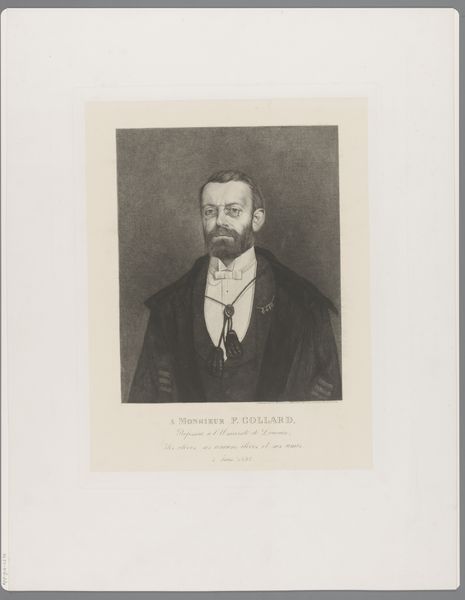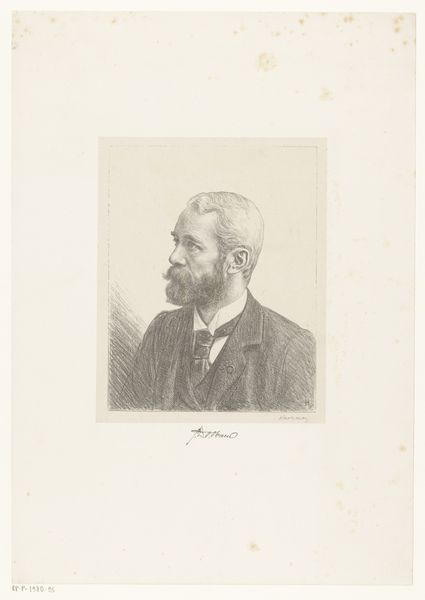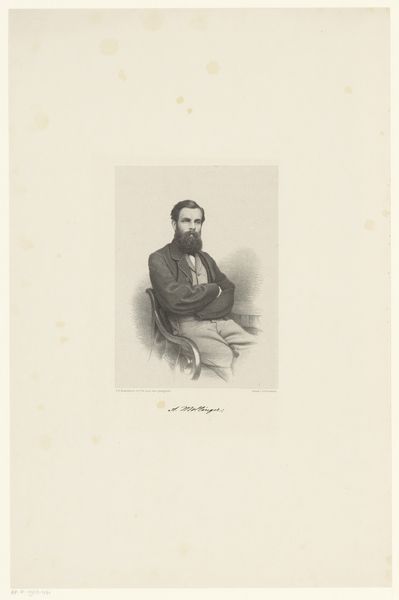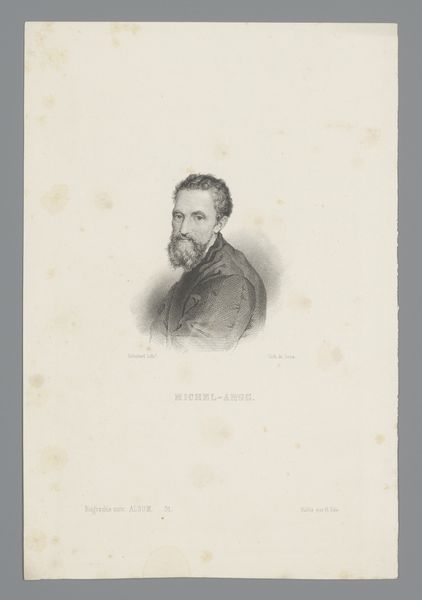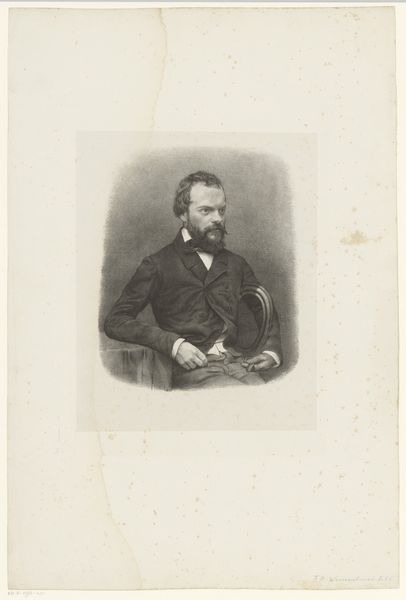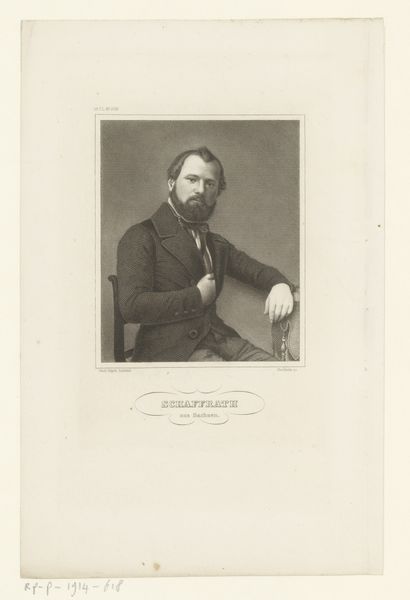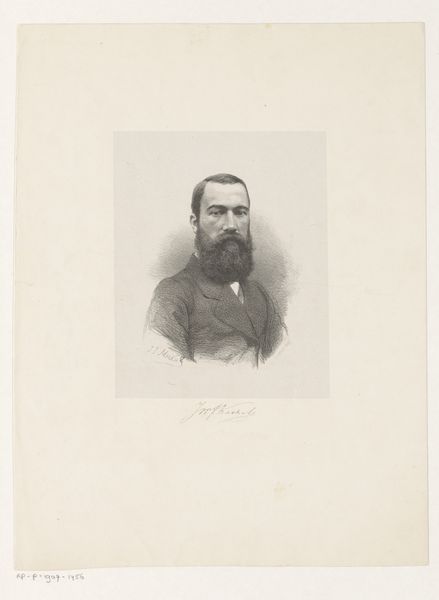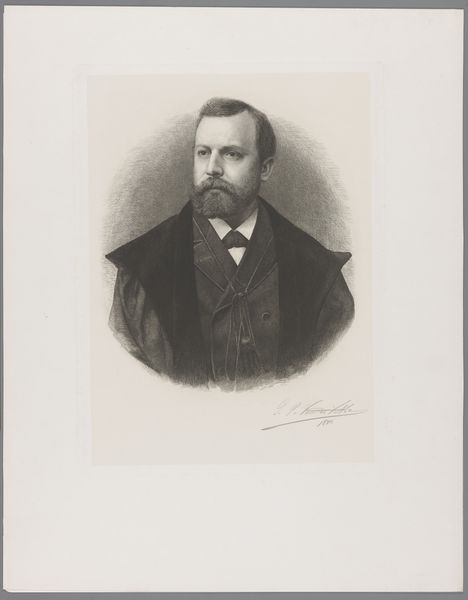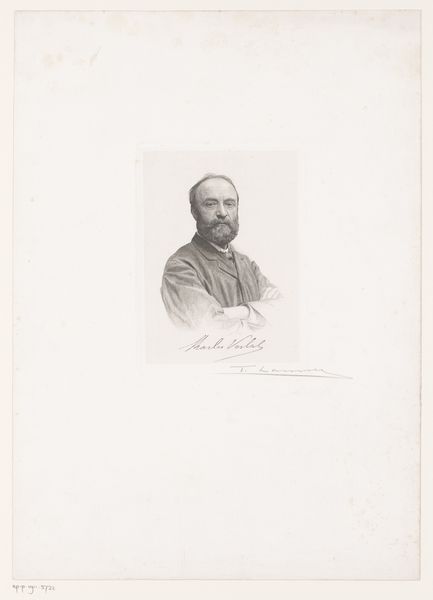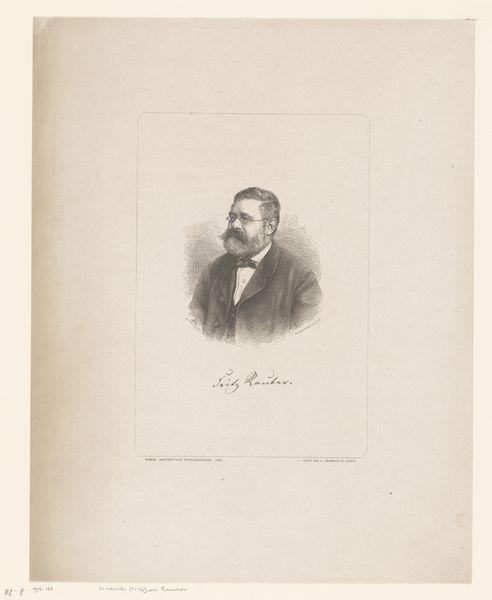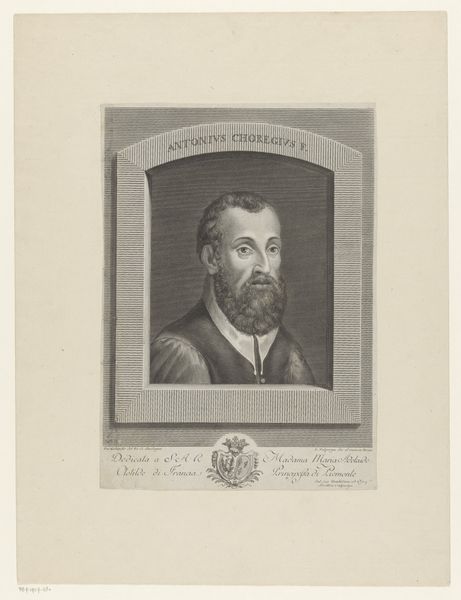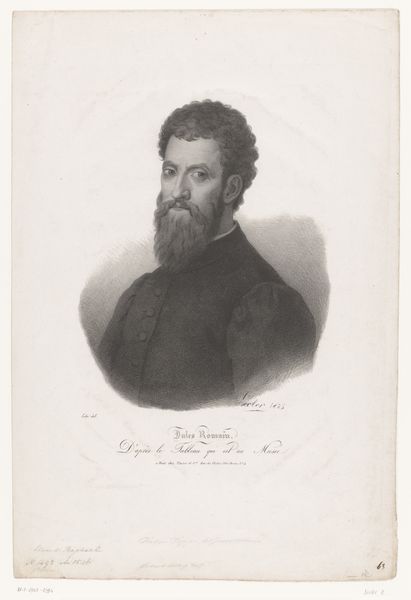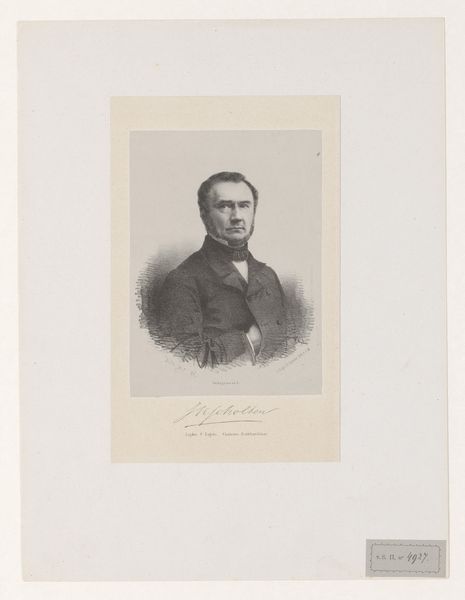
print, photography, graphite
#
portrait
#
pencil drawn
# print
#
pencil sketch
#
photography
#
graphite
#
history-painting
#
realism
#
monochrome
Dimensions: height 262 mm, width 176 mm
Copyright: Rijks Museum: Open Domain
This is Georg Wolf’s portrait of Heinrich Laube, rendered in lithography - a printmaking technique that democratized image production in the 19th century. Unlike older forms of printmaking, which require laborious carving, lithography relies on the chemical repulsion between grease and water. The artist draws on a flat stone or metal plate with a greasy crayon, then treats the surface so that ink adheres only to the drawn areas. This print, made through such a process, presents a striking likeness. The texture of the lithographic crayon gives depth to Laube’s beard and coat. The lithographic process allowed for relatively quick and inexpensive reproduction, making images like this accessible to a wider audience, and influencing the development of mass media and visual culture. In this context, the skills of the artist become tied to wider social issues of labor, politics, and consumption. Examining the materials, processes, and social context allows us to understand the full meaning of this portrait, and challenges traditional distinctions between fine art and craft.
Comments
No comments
Be the first to comment and join the conversation on the ultimate creative platform.
